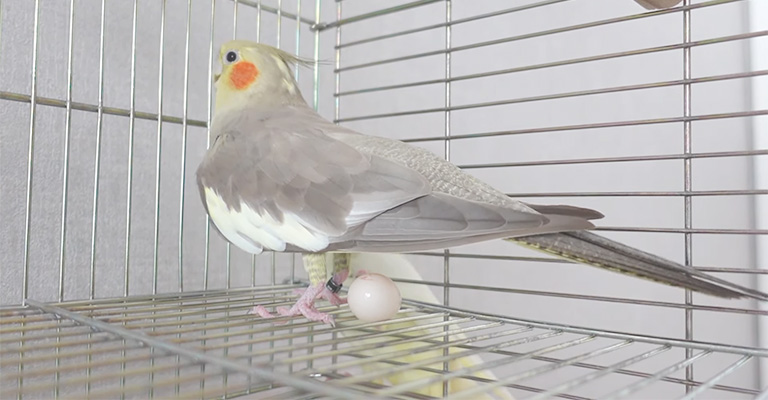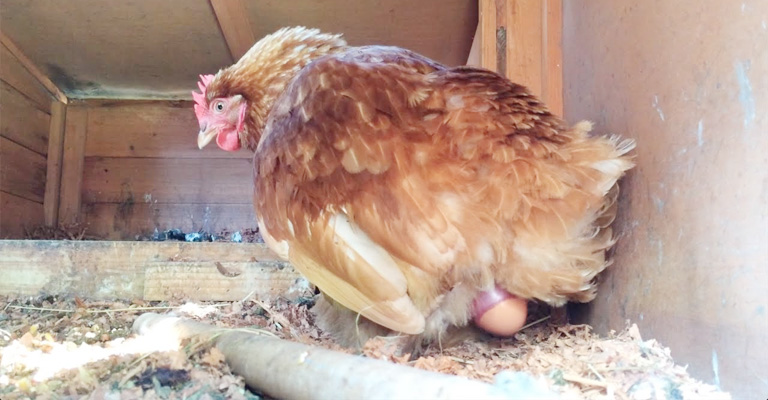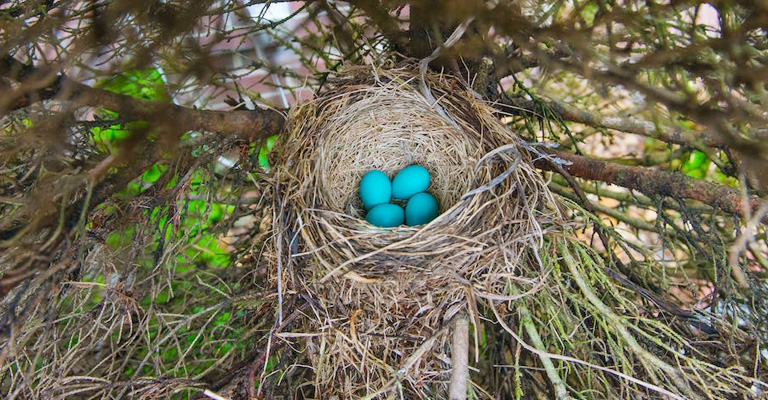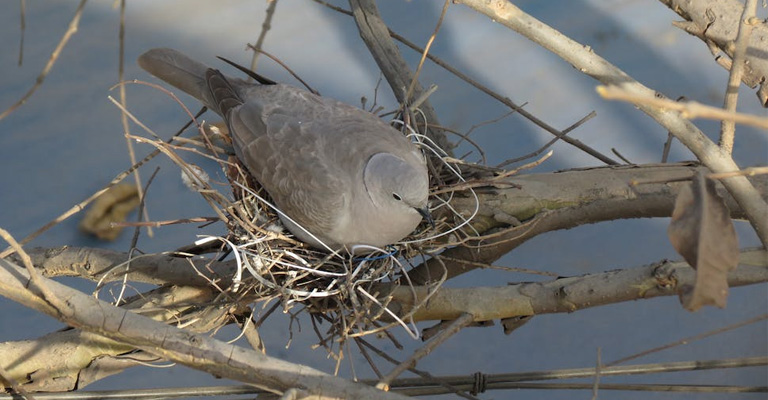In the enchanting realm of avian reproduction, nature unveils fascinating strategies that allow certain bird species to lay eggs without the presence of a male counterpart.
While the traditional image of reproduction often involves the partnership of male and female, some birds have evolved mechanisms to thrive in diverse environments and lifestyles.
This unique ability to reproduce without fertilization opens doors to a world of evolutionary innovation. But how do some birds lay eggs without a male present?
Through parthenogenesis, a process where females produce offspring from unfertilized eggs, and other remarkable adaptations, these birds offer a glimpse into the intricate tapestry of survival and reproduction.
This article delves into the captivating world of asexual reproduction in birds, exploring the mechanisms behind it and the ecological contexts that have led to its development. Join us as we unravel the mysteries of immaculate avian conception.

How Do Some Birds Lay Eggs Without a Male Present?
While the typical narrative of reproduction involves the partnership of male and female counterparts, some bird species have evolved extraordinary mechanisms that allow them to lay eggs without the presence of a male.
This intriguing phenomenon, known as parthenogenesis, challenges our understanding of reproduction and offers a glimpse into the diverse strategies that have emerged in the animal kingdom.
Parthenogenesis, derived from the Greek words “Parthenos” meaning “virgin” and “genesis” meaning “origin,” refers to the process where unfertilized eggs develop into offspring.
In birds, this asexual reproduction occurs through various mechanisms, each adapted to the unique ecological demands of the species. Here’s the process:
Automictic Parthenogenesis
In some bird species, females produce eggs containing duplicated sets of chromosomes.
These eggs then undergo a process of “reduction division,” resulting in eggs with the correct number of chromosomes for development. The offspring produced from these eggs are essentially clones of the mother.
Terminal Fusion Parthenogenesis
This mechanism involves the fusion of two egg nuclei, creating a diploid embryo. Although this process still involves genetic material from the mother, it eliminates the need for a male’s genetic contribution.
Polar Body Parthenogenesis
In certain cases, an unfertilized egg retains one of the polar bodies produced during meiosis.
This polar body contains half of the genetic material necessary for development. When the egg undergoes further division, it fuses with the retained polar body, creating a viable embryo
Why Do Birds Lay Eggs without a Male Present?

Birds lay eggs without a male present due to a phenomenon known as parthenogenesis. Parthenogenesis is a form of asexual reproduction where unfertilized eggs develop into offspring.
This phenomenon challenges the conventional understanding of reproduction, but it has evolved as an adaptation to specific ecological and environmental circumstances. Here are some reasons why birds engage in parthenogenesis:
Mating Opportunities
In some environments, suitable mates might be scarce or difficult to access due to geographic isolation. In such cases, parthenogenesis allows females to reproduce without the need for a male partner, ensuring the continuation of their genetic lineage.
Rapid Reproduction
Parthenogenesis enables females to rapidly reproduce without waiting for the presence of a male. This can be particularly advantageous when conditions are favorable for breeding, such as abundant food resources or suitable nesting sites.
Genetic Diversity
While sexual reproduction promotes genetic diversity through the combination of genetic material from two parents, parthenogenesis results in offspring that are essentially clones of the mother.
Although the lack of genetic diversity can be a limitation, it might be advantageous in stable and predictable environments.
Conservation Strategies

Some species might engage in parthenogenesis as a survival strategy in response to changing environmental conditions or threats. When suitable mates are scarce, asexual reproduction can be a way to ensure the survival of a population.
Evolutionary Persistence
Parthenogenesis might be a remnant of an ancestral trait or an adaptive response to specific ecological niches. Over time, these mechanisms can become fixed in certain populations, resulting in a reproductive strategy that seems unusual but is well-suited to the species’ circumstances.
Energetic Considerations
Producing eggs and raising offspring require energy. In situations where finding a mate is energetically costly or where conditions are unpredictable, parthenogenesis can be a way to ensure reproductive success without the added energy expenditure of finding and competing for mates.
Variation in Mechanisms
Different bird species use various mechanisms for parthenogenesis, such as automictic parthenogenesis or terminal fusion parthenogenesis. These mechanisms have evolved to address specific challenges faced by each species.
Benefits of Birds Laying Eggs without a Male

Birds that lay eggs without a male present, through a process called parthenogenesis, offer several benefits that have contributed to the evolution and persistence of this unique reproductive strategy.
Here are some advantages of birds engaging in asexual reproduction:
Rapid Reproduction
Parthenogenesis allows female birds to reproduce rapidly without the need to find a male partner. This can be especially advantageous in situations where suitable mates are scarce or difficult to access.
By reproducing without the time and energy investment required for mating, females can quickly increase their reproductive output.
Resource Efficiency
In environments where resources are limited or unpredictable, parthenogenesis can be a more efficient way to reproduce. Female birds can allocate their energy solely to egg production and raising offspring, rather than spending energy on finding and competing for mates.
Simplicity
Asexual reproduction through parthenogenesis eliminates the complexities and risks associated with mating, such as courtship rituals, mate selection, and competition with other individuals.
This simplicity can be particularly beneficial in environments with low population densities or when potential mates are scattered.
Conservation of Energy
In some species, males invest significantly less energy in reproduction compared to females.
By reproducing asexually, females can avoid the energy expenditure associated with producing eggs and raising offspring while still benefiting from the genetic contribution of their own genes.
Genetic Control
When females reproduce asexually, they have greater control over the genetic makeup of their offspring.
This can be advantageous when there are specific genetic traits that contribute to survival or reproductive success in a particular environment.
Adaptation to Isolation
In isolated or remote environments where males might be scarce due to geographical barriers, parthenogenesis allows female birds to adapt and persist in such settings without relying on infrequent mating opportunities.
Stability in Favorable Conditions
Parthenogenesis can be particularly beneficial in stable and predictable environments where the conditions for reproduction remain consistent over time.
Asexual reproduction ensures a continuous supply of offspring without the need to rely on external factors like mate availability.
Emergency Reproduction
In the face of catastrophic events, such as the loss of a significant portion of the population due to disease or natural disasters, parthenogenesis can serve as an emergency reproductive strategy to help the species rebound.
Limitations of Birds Laying Eggs without a Male
While birds that lay eggs without a male present through parthenogenesis enjoy certain advantages, this unique reproductive strategy also comes with limitations and challenges.
Here are some of the limitations associated with asexual reproduction in birds:
Reduced Genetic Diversity
One of the primary drawbacks of parthenogenesis is the lack of genetic diversity among offspring. Since all offspring are essentially clones of the mother, they have limited genetic variability.
This reduced diversity can make populations more vulnerable to diseases, environmental changes, and other challenges.
Limited Evolutionary Potential
Sexual reproduction allows for the shuffling and recombination of genetic material, leading to increased genetic variation and the potential for adaptive evolution.
In contrast, parthenogenesis does not contribute to genetic variation in the same way, limiting the species’ ability to adapt to changing conditions over time.
Accumulation of Deleterious Mutations
Without the genetic “repair” mechanisms that sexual reproduction provides through recombination, parthenogenetic offspring might accumulate harmful mutations over generations, potentially compromising their health and fitness.
One-parent Contribution
In species with significant parental investment from both sexes, such as providing care for the offspring, parthenogenesis might result in the loss of a paternal contribution that could enhance offspring survival and development.
Environmental Dependence
Parthenogenesis is more likely to succeed in stable and predictable environments. In rapidly changing or unpredictable environments, the lack of genetic diversity and the inability to adapt through recombination could reduce the fitness of parthenogenetic populations.
Loss of Male-Specific Traits
In species where males exhibit traits that contribute to courtship, mate attraction, or territory defense, parthenogenesis eliminates the transmission of these male-specific traits to the offspring.
Inbreeding Concerns
The lack of genetic diversity in parthenogenetic populations can lead to increased rates of inbreeding. Inbreeding can result in the expression of harmful recessive alleles and reduced fitness in offspring.
Energy Allocation
In species where males contribute resources or parental care to the offspring, the lack of a male contribution through parthenogenesis might require females to invest more energy and resources to compensate.
Long-Term Viability
While parthenogenesis can provide short-term advantages in certain contexts, the long-term viability of populations relying solely on asexual reproduction can be questionable.
Over time, reduced genetic diversity and the absence of adaptive mechanisms might lead to population decline or extinction.
FAQs
Some bird species that are known to engage in parthenogenesis (laying eggs without a male present) include certain types of turkeys, quails, domestic chickens, New Zealand rock wrens, and even reptiles like the Komodo dragon.
Yes, parthenogenesis is observed in various other animal groups as well, including insects, reptiles, and some fish. It’s a phenomenon that has evolved independently in different lineages.
Parthenogenesis is not equally common across all bird species. It is more prevalent in some groups of birds, particularly those that have adapted to specific ecological conditions where males are scarce or inaccessible.
No, parthenogenesis can result in offspring of both sexes. The sex of the offspring is determined by the type of chromosome (Z or W) contributed by the mother.
In some cases, only female offspring are produced (ZW), while in others, both male and female offspring can result (ZZ or WW).
There is some speculation that environmental changes, such as shifts in population dynamics, habitat alterations, or changes in mating patterns, could potentially influence the prevalence of parthenogenesis in certain bird species. However, more research is needed to fully understand the extent of this influence.
Final Words
The phenomenon of birds laying eggs without the presence of a male exemplifies the incredible diversity of reproductive strategies that have emerged in the animal kingdom.
From the ancient halls of evolutionary history to the present day, these adaptable creatures have demonstrated their ability to navigate the challenges of survival through ingenious means.
By studying these remarkable examples of asexual reproduction, scientists gain insight not only into the intricacies of avian biology but also into the broader principles that govern life’s persistence in ever-changing environments.
As we reflect on the wonders of these avian adaptations, we are reminded that nature’s creativity knows no bounds.
The birds that defy conventional expectations of reproduction serve as a reminder that the journey of life is an ongoing experiment, marked by surprises and adaptations that continue to shape the living world around us.